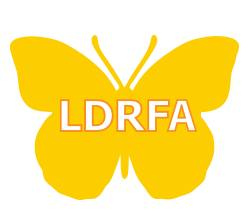By Zahavit Paz & Erin Rodriguez
Table of Contents
ToggleAs if parenthood isn’t difficult enough to navigate, now you suspect your child might have some learning difficulties. Exploring the world of types of learning disabilities, specifically reading failure, writing delays and disorders, may even feel like you need to go back to school yourself just to learn all the ins and outs. However, you are not alone, so jump to the head of the class as we guide you through some common causes and early signs of reading and writing conditions.
Reading disabilities are very common in today’s schools, with 1 in 5 children being diagnosed with dyslexia, according to the International Dyslexia Association. Though not all reading complications are due to dyslexia as an astounding 20% of elementary children struggle with reading nationwide. Signs of dyslexia are often complicated, so let’s break it down into smaller bites.
What Is Phonemic Awareness?
Dyslexia and other reading disabilities are sometimes caused by differences in how the brain processes language and there are usually signs at a young age. One of these processes is called Phonemic Awareness. Phonemic awareness is a critical skill that is a precursor to reading ,letter sounds. Contrary to popular belief, it is not the same as phonics.
Phonemic raise awareness emphasizes individual sounds in spoken language. Once the student has begun to master these sounds, they can then transition to phonics, where they begin to learn the correlation between each phoneme (sound) and grapheme (the letter(s) that represent the sound).
Typically, kindergarten and first-grade students further demonstrate their understanding of spoken words, syllables, and sounds (phonemes) by writing and reading words. By reading aloud with their children, parents can further reinforce these concepts and help build confidence. This also when early signs of disability might show up.
One good indicator is a child’s spelling skills. If a child struggles to spelling words in comparison to his or her same-age peers, it should alert teachers and parents as a possible sign for a learning disability, such as dyslexia, alexia, weak phonological processing, or other reading impairments.
Dyslexia is the most completely studied of the specific learning disability , affecting 80% of all children identified as learning-disabled. According to the Journal of Pediatrics, as dyslexic children progress in school, good reading instruction can promote reading accuracy. However, you must first become cognizant of the signs that your child has reading difficulties.
It is important to note that unaddressed reading disabilities may result in a lifelong deficiency in one’s spelling capability that can persist into adulthood.
This will impact a child’s experience in higher education within the collegiate system, ultimately affecting career advancement and earnings potential. This is why it is so important to seek help as soon as possible.
Schools may suggest performing an assessment or parents can request one from the school.
Your child’s school may recommend various assessment strategies, usually in the form of standardized testing, to assess a student’s reading skills proficiency. If the testing shows a learning disability, you will have several options for getting your child the help he or she needs. One of these is the Individualized Education Plan.
In the event you decide to pursue an Individualized Education Plan (IEP) for your child, you will need to make a formal request to your school district for an educational evaluation. Any parent, teacher, counselor or physician who suspects a child has learning or attention issues, may request the additional and specialized evaluation.
If your child meets the requirements to receive an IEP, the document must be developed within thirty days, as per the Individuals with Disabilities Education Act (IDEA). In conjunction with professionals on the IEP team, parents also play an integral role in developing an appropriate plan focused on strengthening the child’s weaknesses while utilizing their present strengths.
IEP plans may include a systematic study of phonics, accentuating techniques designed that incorporate a multi-sensory learning approach. Methods such as these encompass a structured, sequential, and prescriptive way to teach literacy when reading, writing, and spelling. (Guide to IEP)
What is Phonics?
Phonics is an auditory learning system. It is imperative for a child to have sufficient auditory memory in order to learn, utilize, and understand reading. People with dyslexia often lacks phonemic awareness and may not recognize individual sounds that make up a whole word. This often leads to extreme confusion when attempting to decipher the vast differences between short and long vowel sounds.
Consequently, poor readers and spellers will often mix up words that both look and sound alike. This is caused by a deficit in auditory memory. Auditory memory involves being able to absorb the information presented orally, then processing that information, storing it within the mind, and ultimately being able to recall it at another point in time.
The Impact of Poor Auditory Memory on Child’s Development
Children with poor auditory memory retain only bits and pieces of information. This creates a crucial problem when it comes to literacy because kids with poor auditory memory skills will struggle to perform the sequence of sounds and match them to the corresponding form letters.
In addition, children with auditory memory issues are easily distracted by background noise which directly impacts their ability to concentrate in the classroom, especially when they are required to take oral notes. This is because their ears and brain do not always coordinate and often too many interfering sounds will completely derail concentration.
Many Dyslexic students who haven’t been diagnosed with ADHD will exhibit concentration and attention problems. Symptom of ADHD and auditory memory issues often go hand in hand. Reading ability, writing skills, mathematics, organization, and the student’s overall comprehension skills will exhibit a deficiency.
Video: Signs of a reading disability
What are the signs your child has or might develop reading difficulties?
- If your child had repeated ear infections during their early years, he or she eventually may have trouble learning to spell to read and write the word.
- If your child is late to talk, compared to his age group, by the age of preschool, it’s recommended to have screening speech and hearing. (Tip: check out your local Head Start program to find an affordable screening program.)
- If your child has reading difficulties with words sounds and is showing signs of struggling with rhyming or recognizing words that start with the same sound.
- Check your child’s auditory memory. Is she showing a sign of poor auditory memory and comprehension?
Conclusion
While there is a lot of information out there, some of it even conflicting, experts, all agree that early intervention is the key to success. Early intervention is critical for improving positive outcomes for students with learning disabilities and dyslexia. Without early intervention, gaps for struggling readers and their non-disabled peers will only continue to widen. Any method of intervention must be specifically tailored to each child’s specific learning deficit in order to be the most effective.
You as the parent are often the first person to suspect reading and writing difficulties as you know your child best. If you’re not sure, it’s always better to ask a professional than to assume your child’s struggles are nothing of concern. If you are exploring the possibility of getting an assessment for your child for reading comprehension or writing disabilities, summer is an ideal time to get a head start. Remember, there is no better champion for a student than an involved parent.
Image by StockSnap from Pixabay

Author: Erin Rodriguez resides near San Antonio, Texas with her beloved family. She is a writer and editor with over 20 years of experience in the education field. Her passions include children, music, animals, photography, and nature. She is an active and respected member of her community.
 Zahavit Paz is a co-founder of LD Resources Foundation. She’s a graduate of CUNY Graduate disabilities study program. She is often a presenter on Assistive Technology at professional conferences in schools and colleges and has written extensively on her personal struggle with Dyslexia and ADHD. She is an advocate for individuals with LD and provides resources and information through the LDRFA website. More info about Zahavit Paz.
Zahavit Paz is a co-founder of LD Resources Foundation. She’s a graduate of CUNY Graduate disabilities study program. She is often a presenter on Assistive Technology at professional conferences in schools and colleges and has written extensively on her personal struggle with Dyslexia and ADHD. She is an advocate for individuals with LD and provides resources and information through the LDRFA website. More info about Zahavit Paz.


